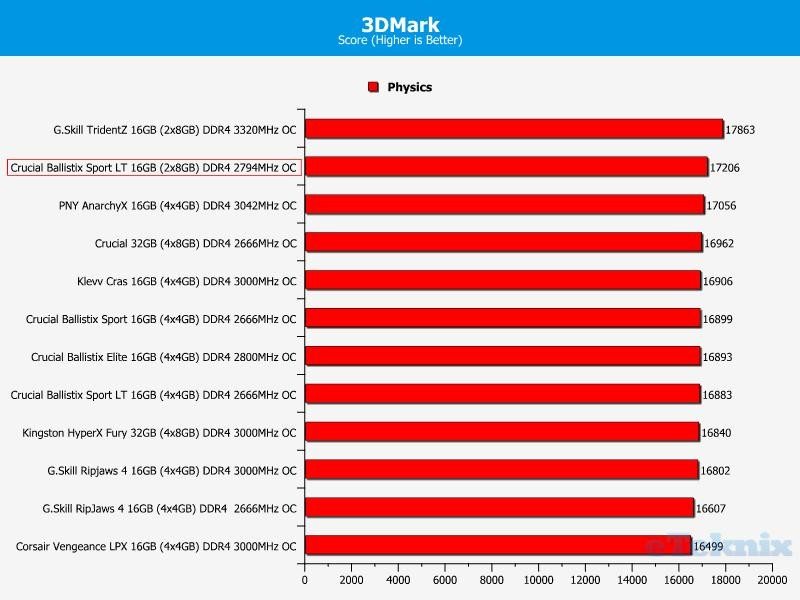Crucial Ballistix Sport LT DDR4 2400MHz 16GB (2x8GB) Dual Channel Memory Kit Review
John Williamson / 9 years ago
Performance Benchmarks
Cinebench
Memory speed doesn’t have a substantial impact during heavy workloads, but there’s enough of a difference to distinguish between various products. Here we can see, the Sport LT dual channel kit at 2400MHz achieved an excellent score and competed exceedingly well against the competition.
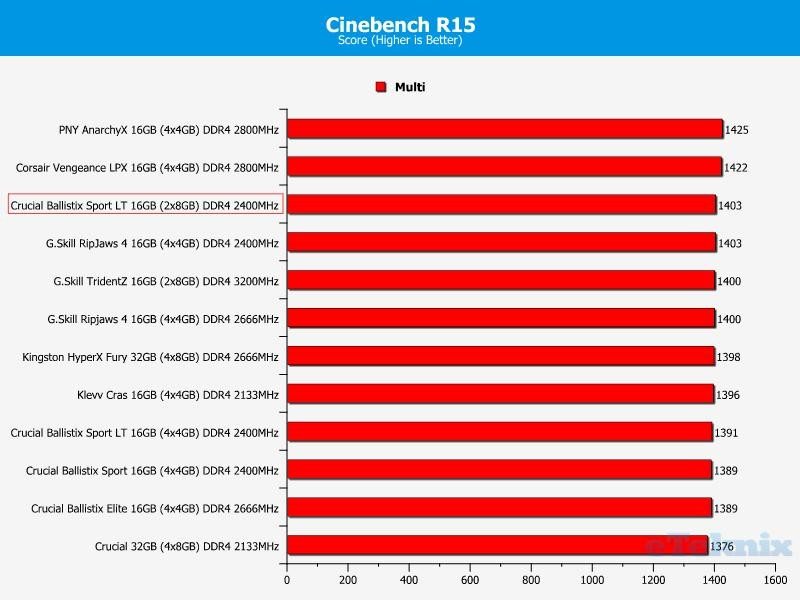
Once overclocked, the memory received a substantial boost and reached first place by a decent margin.

AIDA64
As expected, the dual channel configuration results in significantly lower bandwidth than other quad channel DIMMs. Additionally, it also falls behind the higher frequency G.Skill TridentZ. Despite this, the overall bandwidth is much better than you might expect for a dual channel 2400MHz kit.
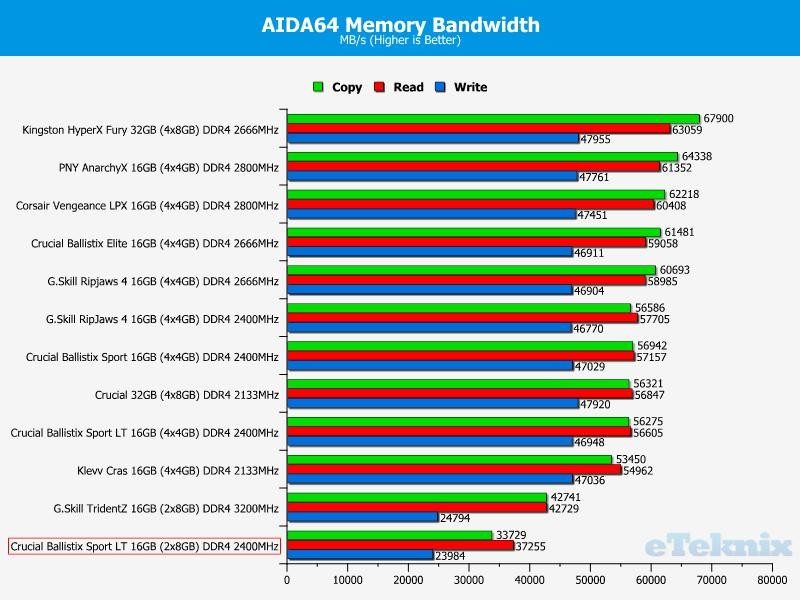
The hefty 2794MHz overclock greatly enhances performance in AIDA64’s memory bandwidth benchmark and illustrates the benefits of a manual frequency increase.
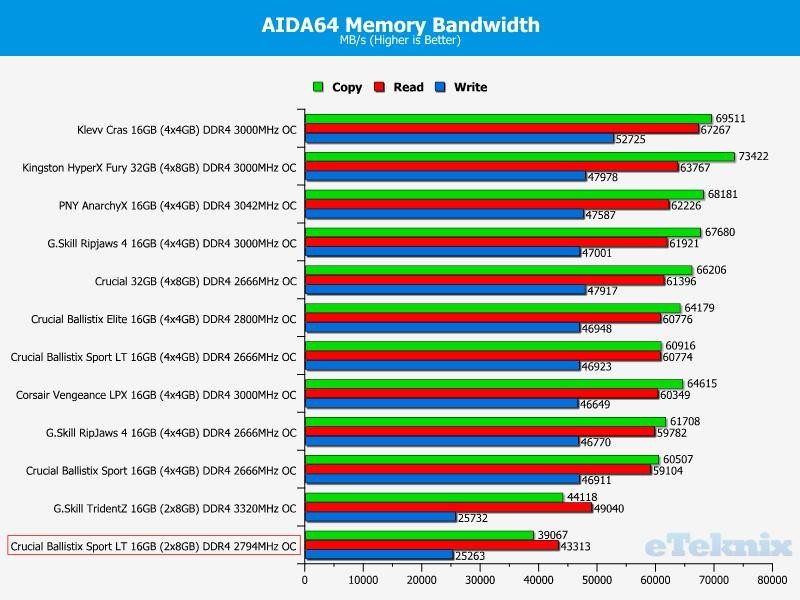
At stock settings, the Sport LT dual channel features a very respectable memory latency of 70 nanoseconds and exhibited identical performance to the quad channel variant.
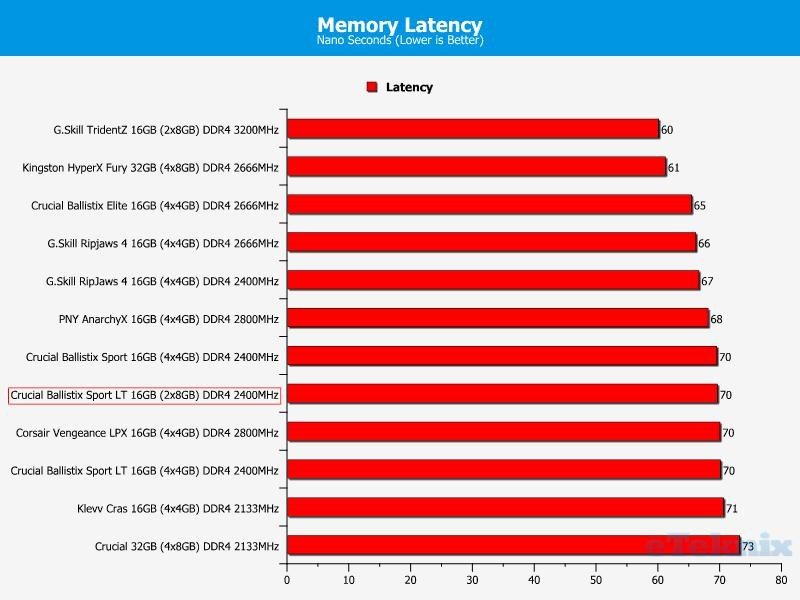
The overclock’s tight timings allows for a major drop in latency time. This is an impressive feat and I was surprised to see a large overclock remain stable and utilize tighter timings than the stock 2400MHz frequency.

SiSoft Sandra
In a similar vein to AIDA64, the 2400MHz rate limits the memory bandwidth compared to other high-end solutions. Nevertheless, this shouldn’t affect real world scenarios in a noticeable manner.
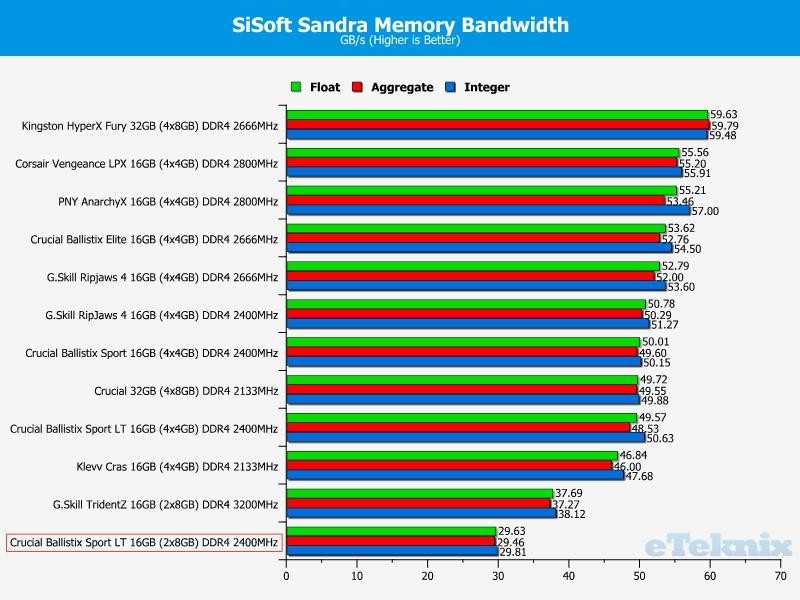
Once overclocked, the Sport LT dual channel demonstrates clear performance gains and edges closer to the TridentZ.
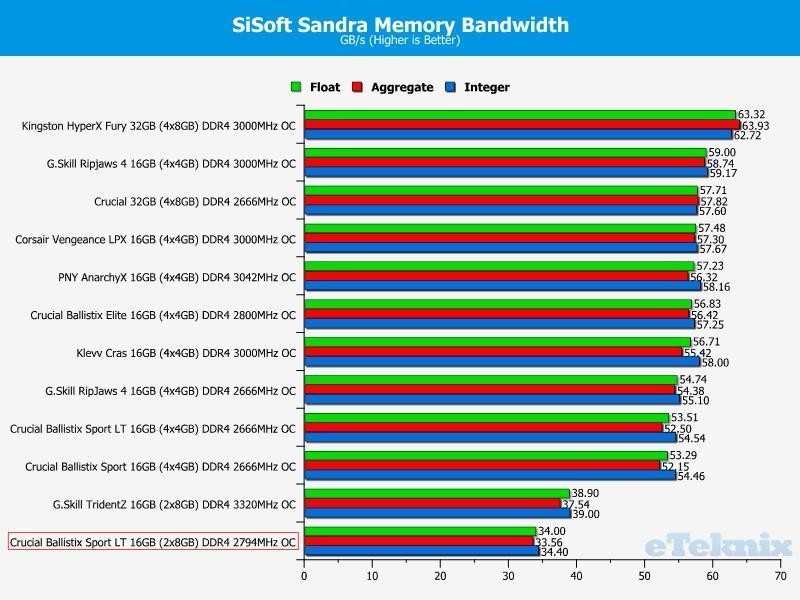
WPrime
Here we can see the fantastic compute time in WPrime which showcases the memory’s capabilities. Although, please note the gap between these results is tiny and within a margin of error.
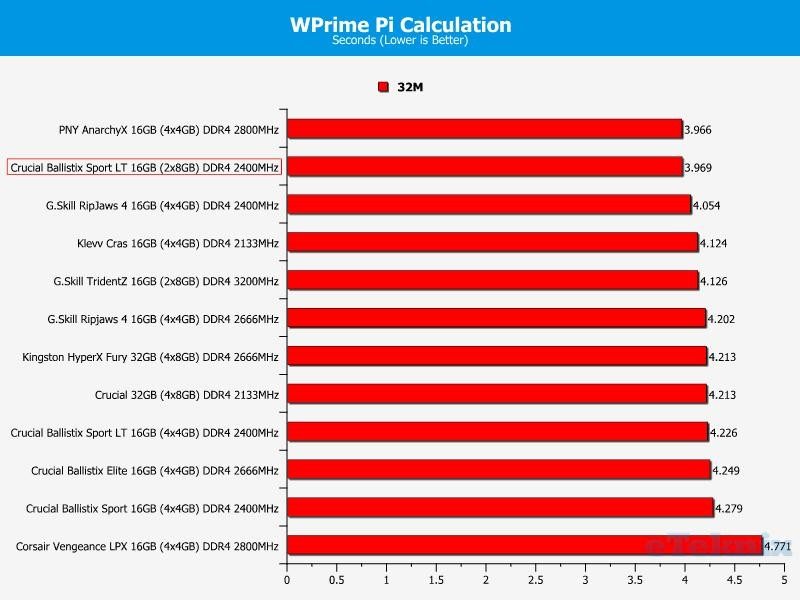
The overclocking headroom allows for the best compute time we’ve seen and even managed to outperformed higher frequency modules.

3DMark Fire Strike
3D performance is predominately GPU bound and NVIDIA’s latest driver updates have dramatically improved scores in this particular test. Despite this, at stock settings, the memory kit almost matches the higher-end G.Skill TridentZ.
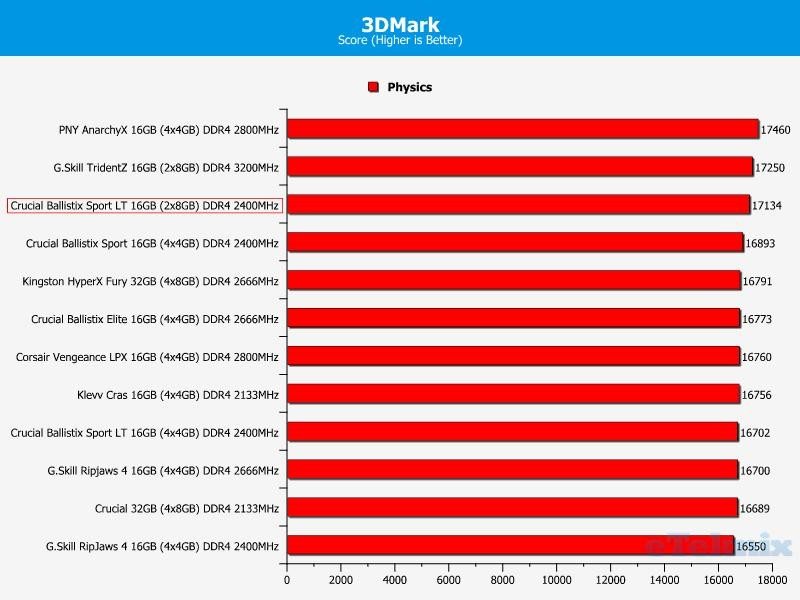
Bizarrely, the overclocked run actually resulted in a poorer Physics score. This isn’t a cause for concern though as the drop off point is tiny and within a margin of error.
